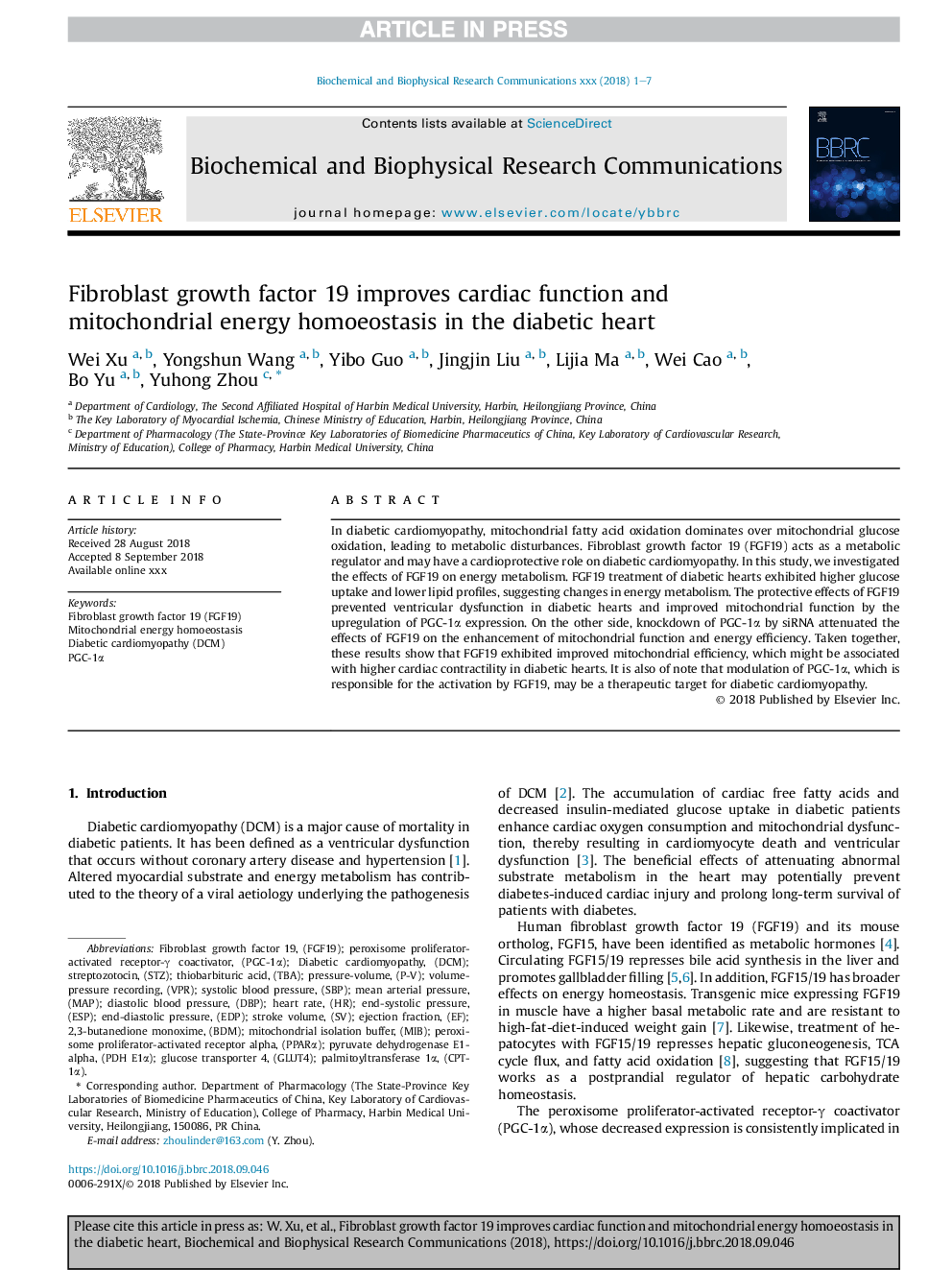| Article ID | Journal | Published Year | Pages | File Type |
|---|---|---|---|---|
| 11001799 | Biochemical and Biophysical Research Communications | 2018 | 7 Pages |
Abstract
In diabetic cardiomyopathy, mitochondrial fatty acid oxidation dominates over mitochondrial glucose oxidation, leading to metabolic disturbances. Fibroblast growth factor 19 (FGF19) acts as a metabolic regulator and may have a cardioprotective role on diabetic cardiomyopathy. In this study, we investigated the effects of FGF19 on energy metabolism. FGF19 treatment of diabetic hearts exhibited higher glucose uptake and lower lipid profiles, suggesting changes in energy metabolism. The protective effects of FGF19 prevented ventricular dysfunction in diabetic hearts and improved mitochondrial function by the upregulation of PGC-1α expression. On the other side, knockdown of PGC-1α by siRNA attenuated the effects of FGF19 on the enhancement of mitochondrial function and energy efficiency. Taken together, these results show that FGF19 exhibited improved mitochondrial efficiency, which might be associated with higher cardiac contractility in diabetic hearts. It is also of note that modulation of PGC-1α, which is responsible for the activation by FGF19, may be a therapeutic target for diabetic cardiomyopathy.
Keywords
(MAP)PGC-1α(HR)2,3-Butanedione monoximeperoxisome proliferator-activated receptor alphastreptozotocinThiobarbituric acidstroke volumeglucose transporter 4Heart ratefibroblast growth factor 19pressure-volumediastolic blood pressuresystolic blood pressureend-diastolic pressureend-systolic pressuremean arterial pressureperoxisome proliferator-activated receptor-γ coactivatordiabetic cardiomyopathyejection fraction
Related Topics
Life Sciences
Biochemistry, Genetics and Molecular Biology
Biochemistry
Authors
Wei Xu, Yongshun Wang, Yibo Guo, Jingjin Liu, Lijia Ma, Wei Cao, Bo Yu, Yuhong Zhou,
